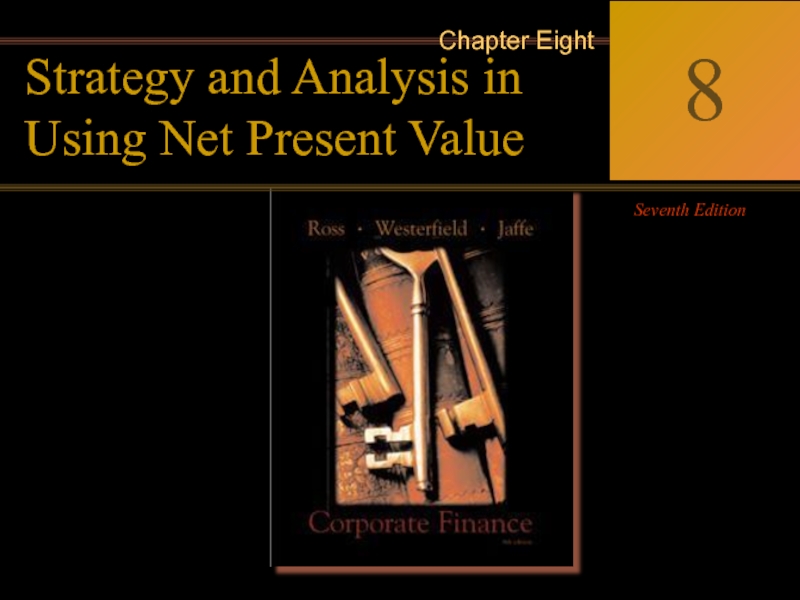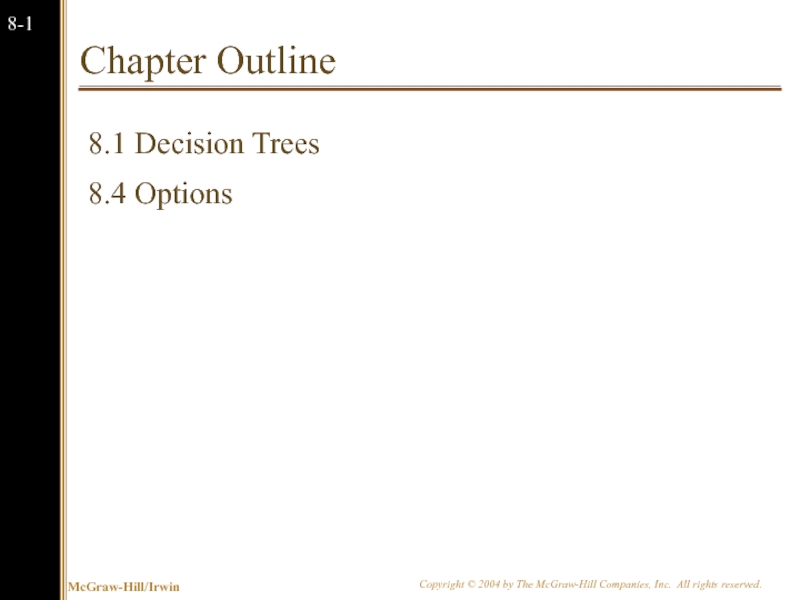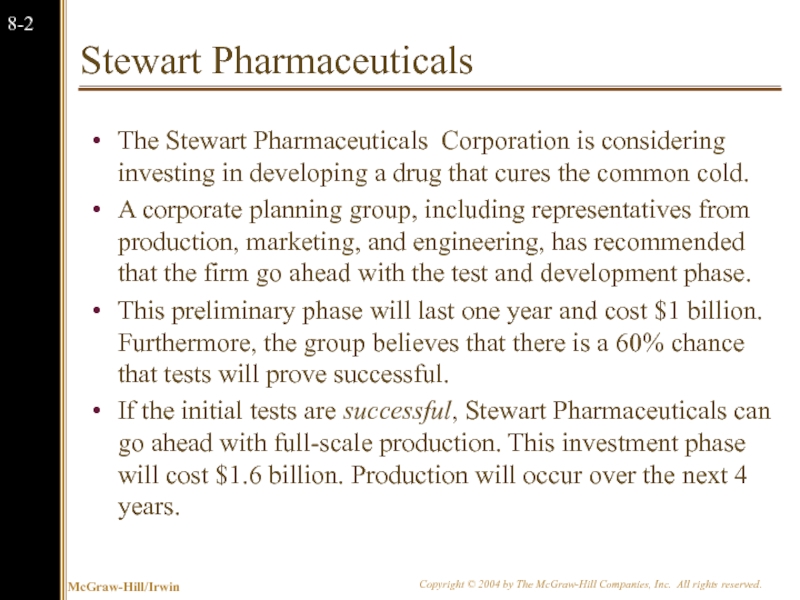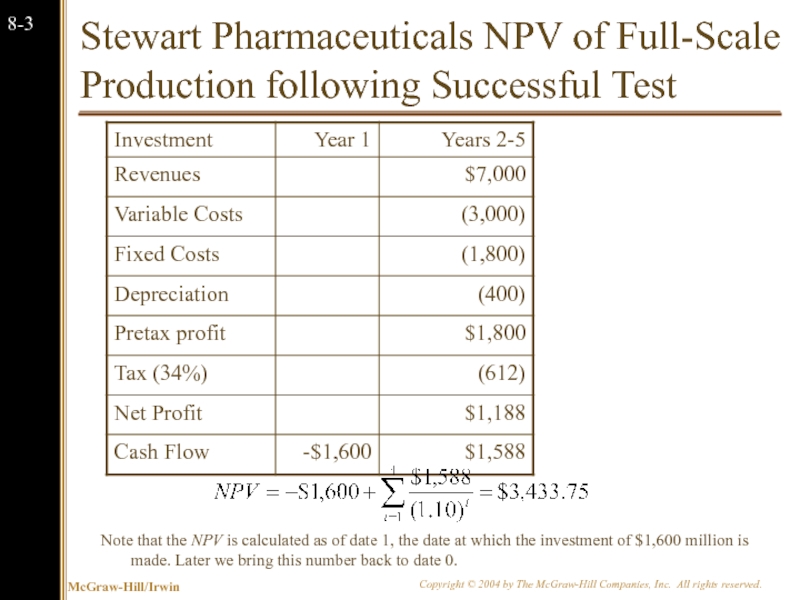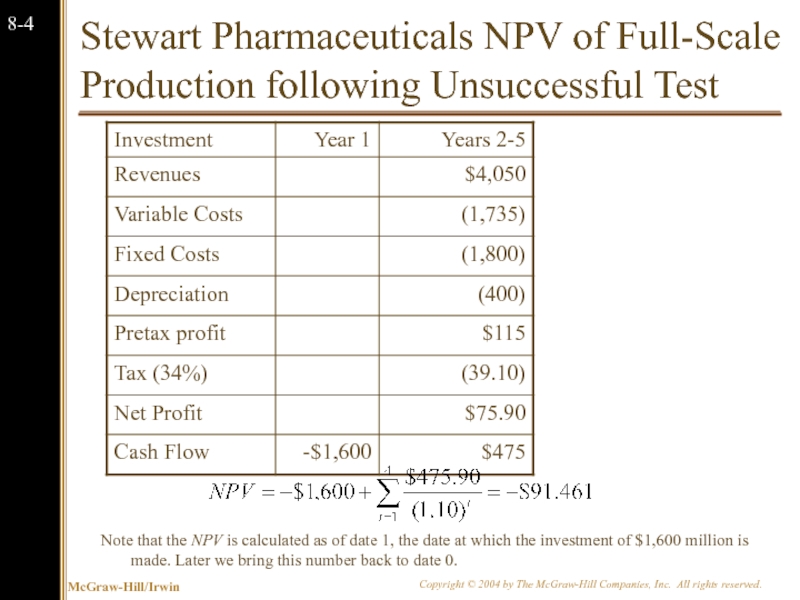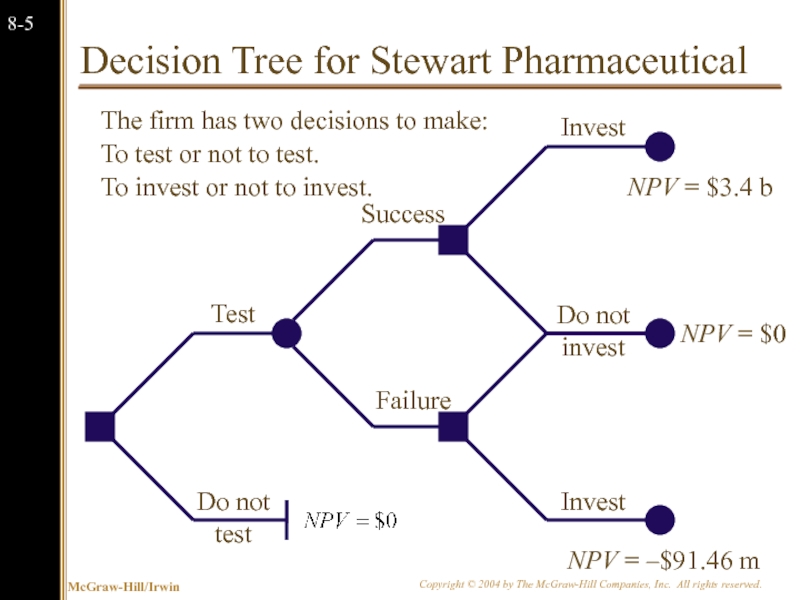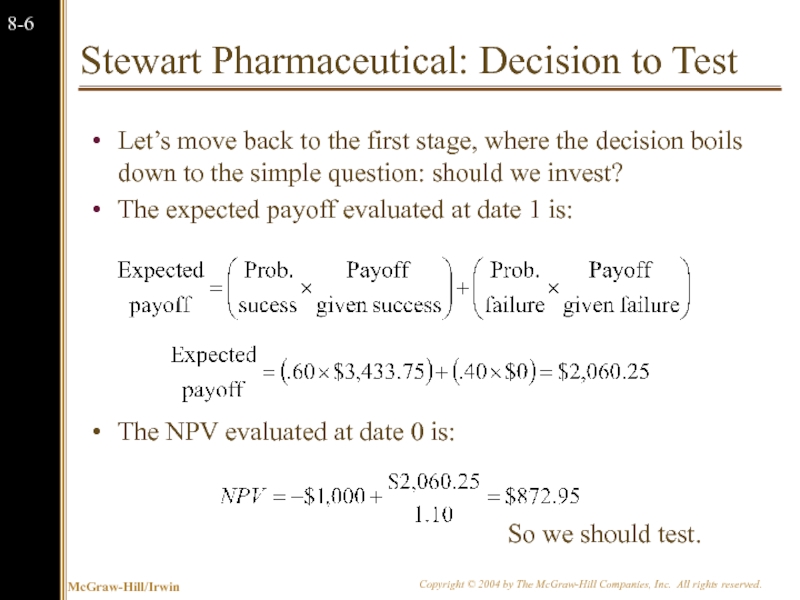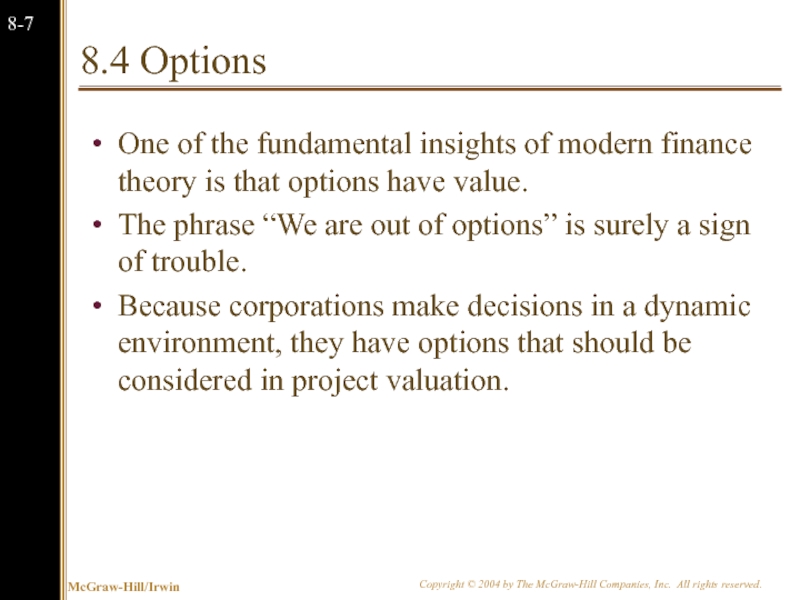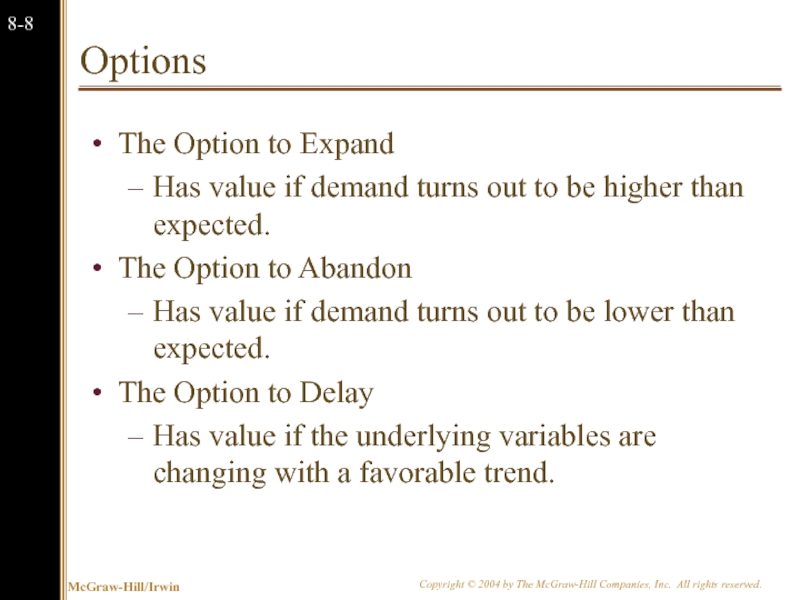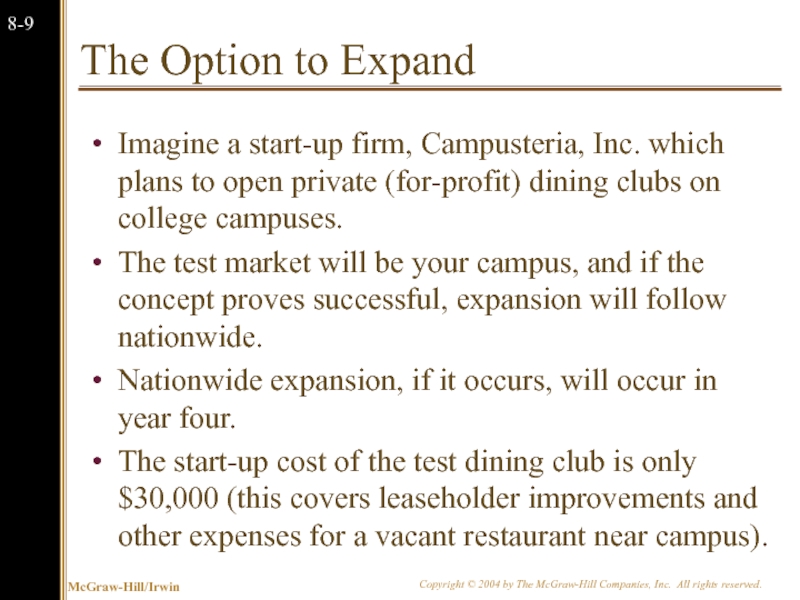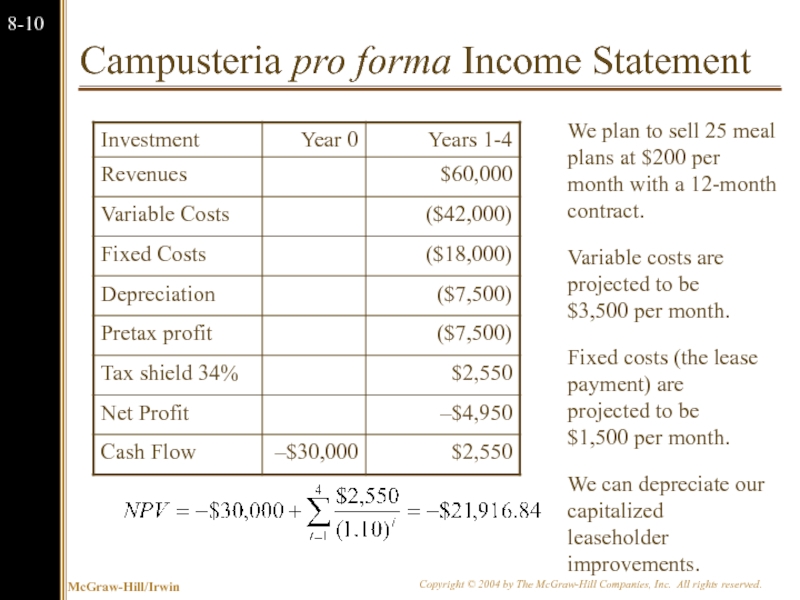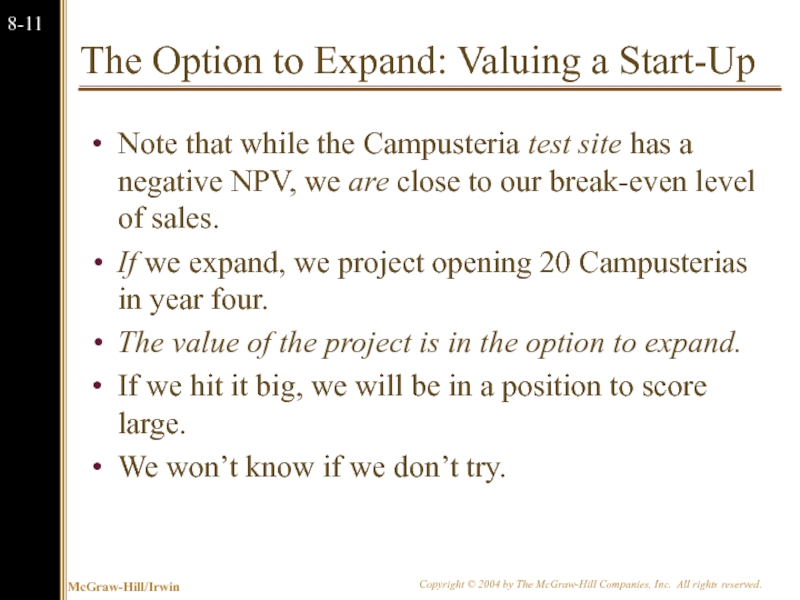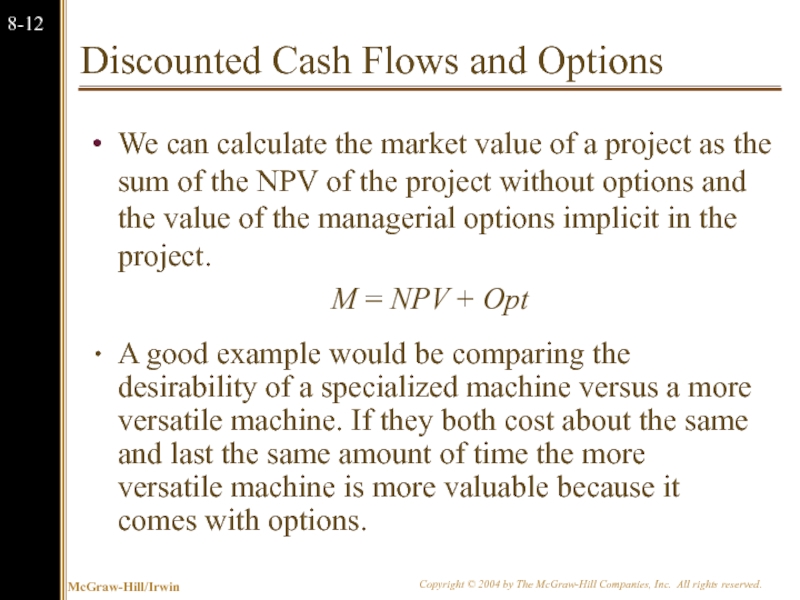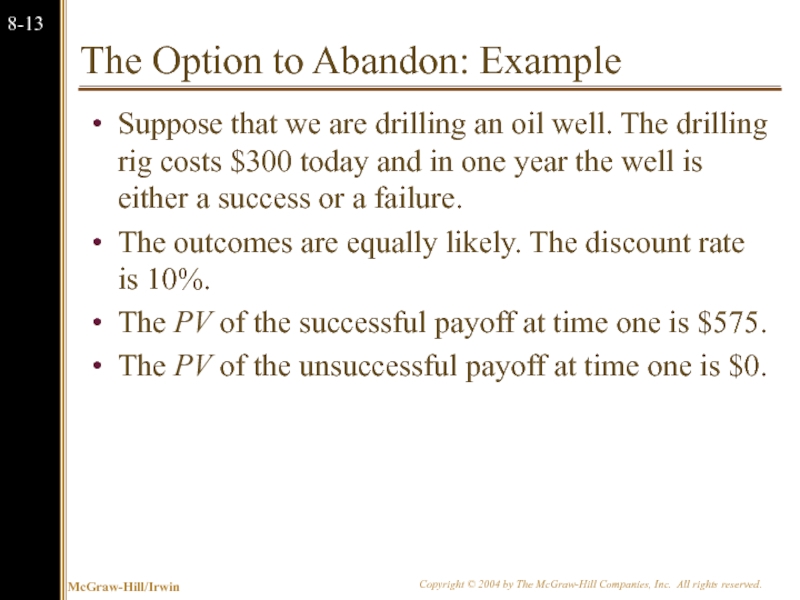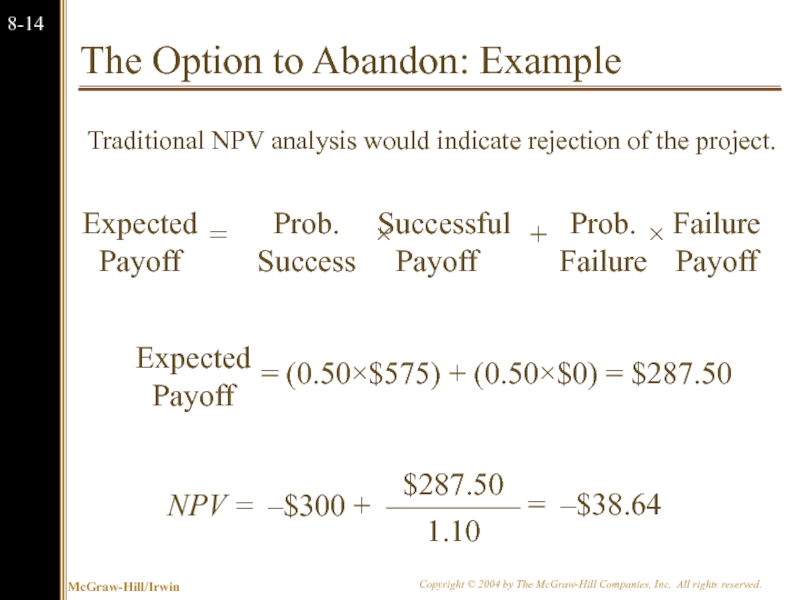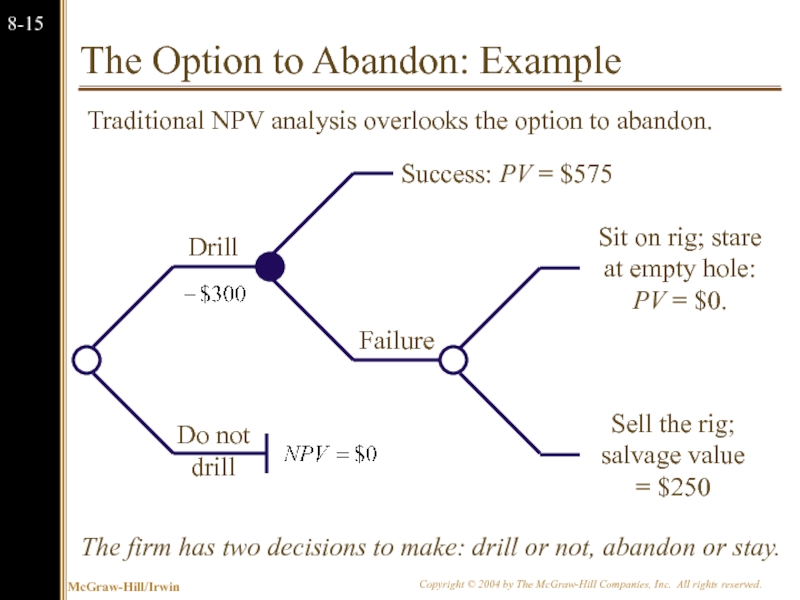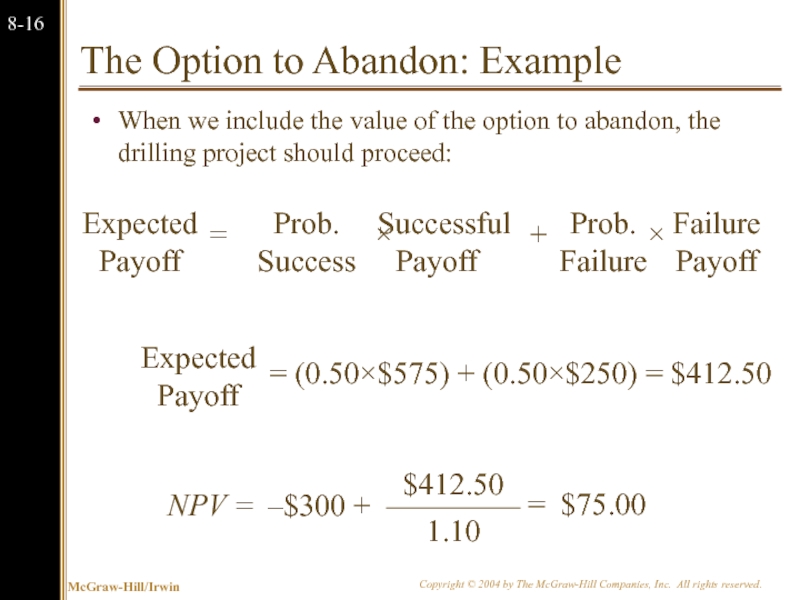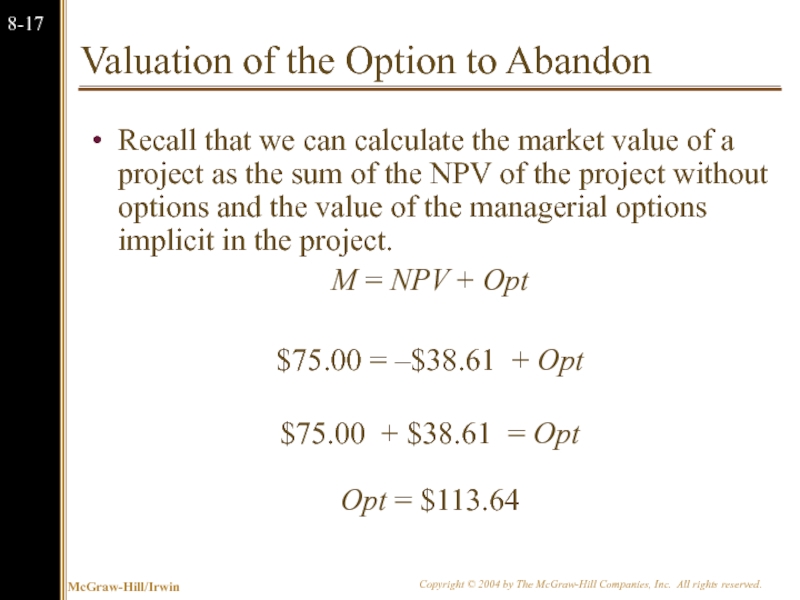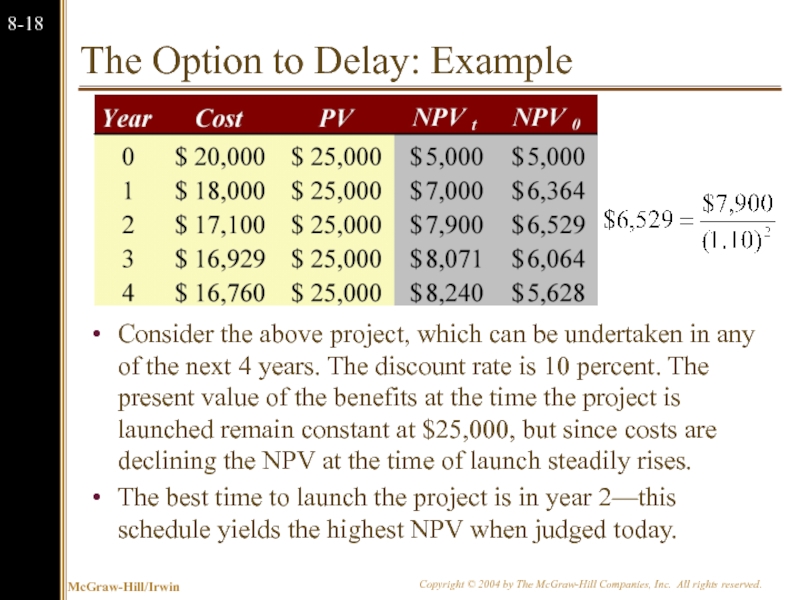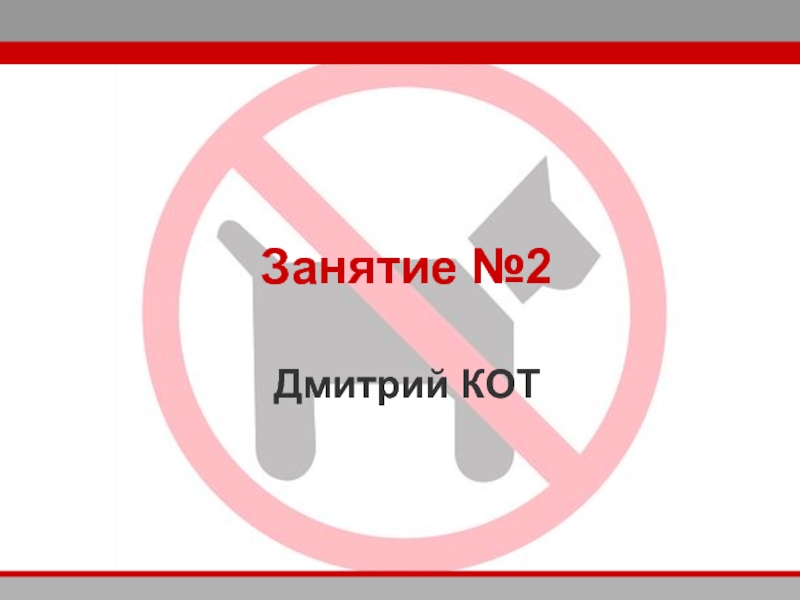- Главная
- Разное
- Дизайн
- Бизнес и предпринимательство
- Аналитика
- Образование
- Развлечения
- Красота и здоровье
- Финансы
- Государство
- Путешествия
- Спорт
- Недвижимость
- Армия
- Графика
- Культурология
- Еда и кулинария
- Лингвистика
- Английский язык
- Астрономия
- Алгебра
- Биология
- География
- Детские презентации
- Информатика
- История
- Литература
- Маркетинг
- Математика
- Медицина
- Менеджмент
- Музыка
- МХК
- Немецкий язык
- ОБЖ
- Обществознание
- Окружающий мир
- Педагогика
- Русский язык
- Технология
- Физика
- Философия
- Химия
- Шаблоны, картинки для презентаций
- Экология
- Экономика
- Юриспруденция
Strategy and Analysis in Using Net Present Value. Stewart Pharmaceuticals презентация
Содержание
- 1. Strategy and Analysis in Using Net Present Value. Stewart Pharmaceuticals
- 2. Chapter Outline 8.1 Decision Trees 8.4 Options
- 3. Stewart Pharmaceuticals The Stewart Pharmaceuticals Corporation
- 4. Stewart Pharmaceuticals NPV of Full-Scale Production
- 5. Stewart Pharmaceuticals NPV of Full-Scale Production
- 6. Decision Tree for Stewart Pharmaceutical Do
- 7. Stewart Pharmaceutical: Decision to Test Let’s move
- 8. 8.4 Options One of the fundamental insights
- 9. Options The Option to Expand Has value
- 10. The Option to Expand Imagine a start-up
- 11. Campusteria pro forma Income Statement We plan
- 12. The Option to Expand: Valuing a Start-Up
- 13. Discounted Cash Flows and Options We can
- 14. The Option to Abandon: Example Suppose that
- 15. The Option to Abandon: Example Traditional NPV analysis would indicate rejection of the project.
- 16. The Option to Abandon: Example The firm
- 17. The Option to Abandon: Example When
- 18. Valuation of the Option to Abandon Recall
- 19. The Option to Delay: Example Consider the
Слайд 3Stewart Pharmaceuticals
The Stewart Pharmaceuticals Corporation is considering investing in developing
A corporate planning group, including representatives from production, marketing, and engineering, has recommended that the firm go ahead with the test and development phase.
This preliminary phase will last one year and cost $1 billion. Furthermore, the group believes that there is a 60% chance that tests will prove successful.
If the initial tests are successful, Stewart Pharmaceuticals can go ahead with full-scale production. This investment phase will cost $1.6 billion. Production will occur over the next 4 years.
Слайд 4
Stewart Pharmaceuticals NPV of Full-Scale Production following Successful Test
Note that the
Слайд 5
Stewart Pharmaceuticals NPV of Full-Scale Production following Unsuccessful Test
Note that the
Слайд 6
Decision Tree for Stewart Pharmaceutical
Do not test
Test
Failure
Success
Do not invest
Invest
The firm has
To test or not to test.
To invest or not to invest.
NPV = $3.4 b
NPV = $0
NPV = –$91.46 m
Слайд 7Stewart Pharmaceutical: Decision to Test
Let’s move back to the first stage,
The expected payoff evaluated at date 1 is:
The NPV evaluated at date 0 is:
So we should test.
Слайд 88.4 Options
One of the fundamental insights of modern finance theory is
The phrase “We are out of options” is surely a sign of trouble.
Because corporations make decisions in a dynamic environment, they have options that should be considered in project valuation.
Слайд 9Options
The Option to Expand
Has value if demand turns out to be
The Option to Abandon
Has value if demand turns out to be lower than expected.
The Option to Delay
Has value if the underlying variables are changing with a favorable trend.
Слайд 10The Option to Expand
Imagine a start-up firm, Campusteria, Inc. which plans
The test market will be your campus, and if the concept proves successful, expansion will follow nationwide.
Nationwide expansion, if it occurs, will occur in year four.
The start-up cost of the test dining club is only $30,000 (this covers leaseholder improvements and other expenses for a vacant restaurant near campus).
Слайд 11Campusteria pro forma Income Statement
We plan to sell 25 meal plans
Variable costs are projected to be $3,500 per month.
Fixed costs (the lease payment) are projected to be $1,500 per month.
We can depreciate our capitalized leaseholder improvements.
Слайд 12The Option to Expand: Valuing a Start-Up
Note that while the Campusteria
If we expand, we project opening 20 Campusterias in year four.
The value of the project is in the option to expand.
If we hit it big, we will be in a position to score large.
We won’t know if we don’t try.
Слайд 13Discounted Cash Flows and Options
We can calculate the market value of
M = NPV + Opt
A good example would be comparing the desirability of a specialized machine versus a more versatile machine. If they both cost about the same and last the same amount of time the more versatile machine is more valuable because it comes with options.
Слайд 14The Option to Abandon: Example
Suppose that we are drilling an oil
The outcomes are equally likely. The discount rate is 10%.
The PV of the successful payoff at time one is $575.
The PV of the unsuccessful payoff at time one is $0.
Слайд 15The Option to Abandon: Example
Traditional NPV analysis would indicate rejection
Слайд 16The Option to Abandon: Example
The firm has two decisions to make:
Traditional NPV analysis overlooks the option to abandon.
Слайд 17The Option to Abandon: Example
When we include the value of
Слайд 18Valuation of the Option to Abandon
Recall that we can calculate the
M = NPV + Opt
$75.00 = –$38.61 + Opt
$75.00 + $38.61 = Opt
Opt = $113.64
Слайд 19The Option to Delay: Example
Consider the above project, which can be
The best time to launch the project is in year 2—this schedule yields the highest NPV when judged today.
